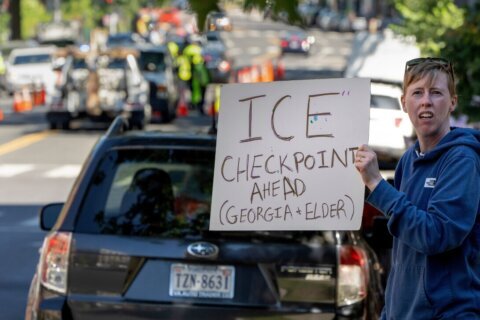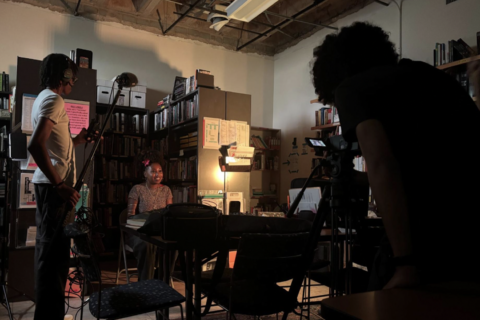WASHINGTON — The school year will be extended by a full month for 10 additional D.C. elementary and middle schools in an effort to close achievement gaps among the city’s most disadvantaged children.
D.C. Mayor Muriel Bowser announced the 200-day school year Wednesday along with public schools Chancellor Kaya Henderson. The calendar reforms build on a program at Raymond Education Campus, which is in the middle of its first year with an extended calendar, and 41 schools that offer extended school days.
“This is not an experiment. This is based on research,” Henderson said of the longer school year.
“There is very clear evidence that providing students with more instructional time, more educational opportunities, more time for enrichment – particularly students that are the neediest – that leads to improved outcomes,” she said. “We don’t want to just improve our reading and math scores. I’ve been very clear that it’s important to us to develop our students’ talents as much as our test scores.”
Henderson said the longer school year will offer the time needed for in-depth instruction, field trips plus art, music and physical education classes. The new calendar also sets aside eight days for students who are struggling to receive extra, targeted help.
Schools that will operate under the longer calendar are primarily in Wards 7 and 8 — parts of the city with some of the highest rates of poverty.
By the time children reach the 8th grade, the children will have earned a full extra year of instructional time, Bowser said.
“We know that reducing the summer slide will also help us reduce the gap between how well our children are doing,” she said.
The new calendar will include two additional breaks in October and June plus the regular winter and spring breaks offered at most District schools.
The extended school year will begin with the 2016-2017 school year in the following schools:
- Garfield Elementary School (Ward 8)
- H.D. Cooke Elementary School (Ward 1)
- Hart Middle School (Ward 8)
- Hendley Elementary School (Ward 8)
- Johnson Middle School (Ward 8)
- Kelly Miller Middle School (Ward 7)
- King Elementary School (Ward 8)
- Randle Highlands Elementary School (Ward 7)
- Thomas Elementary School (Ward 7)
- Turner Elementary School (Ward 8)
The schools were selected based on active interest from parents, strong leadership in each school and “student bodies that demonstrate room for growth,” the District said.
Henderson said that the idea for the extended year evolved from schools that run a longer school day to increase instructional time. Some principals wanted the longer year instead of working more hours each week. Surveys and other feedback from parents and staff helped shaped the final list of schools making the switch, she said.
“We didn’t make these decisions in a vacuum,” she said. “It’s not a one-size-fits-all solution. It makes sense for some schools and communities, it doesn’t make sense for others.”
In November, Henderson released what she called “sobering” test results showing that D.C. students aren’t meeting basic standards in math and English.
Only 24 percent of the District’s public and charter school students scored proficient or above in math, based on the Partnership for Assessment of Readiness for College and Careers exam. Only a quarter of students hit the mark for the English and language arts portion of the test.
And a study commissioned by D.C. government and released last summer found that stark gaps in academic achievement and graduation rates persist.
The extended calendar will cost the District $500,000 per school. Teachers will be paid for an 11-month contract instead of the typical 10-month contract, which is allowed under the collective bargaining agreement.
“For a long time, as a traditional district, we weren’t nimble enough to figure out how to do this. That’s over now,” Henderson said.
The new school year will start in August and will close in mid July.








